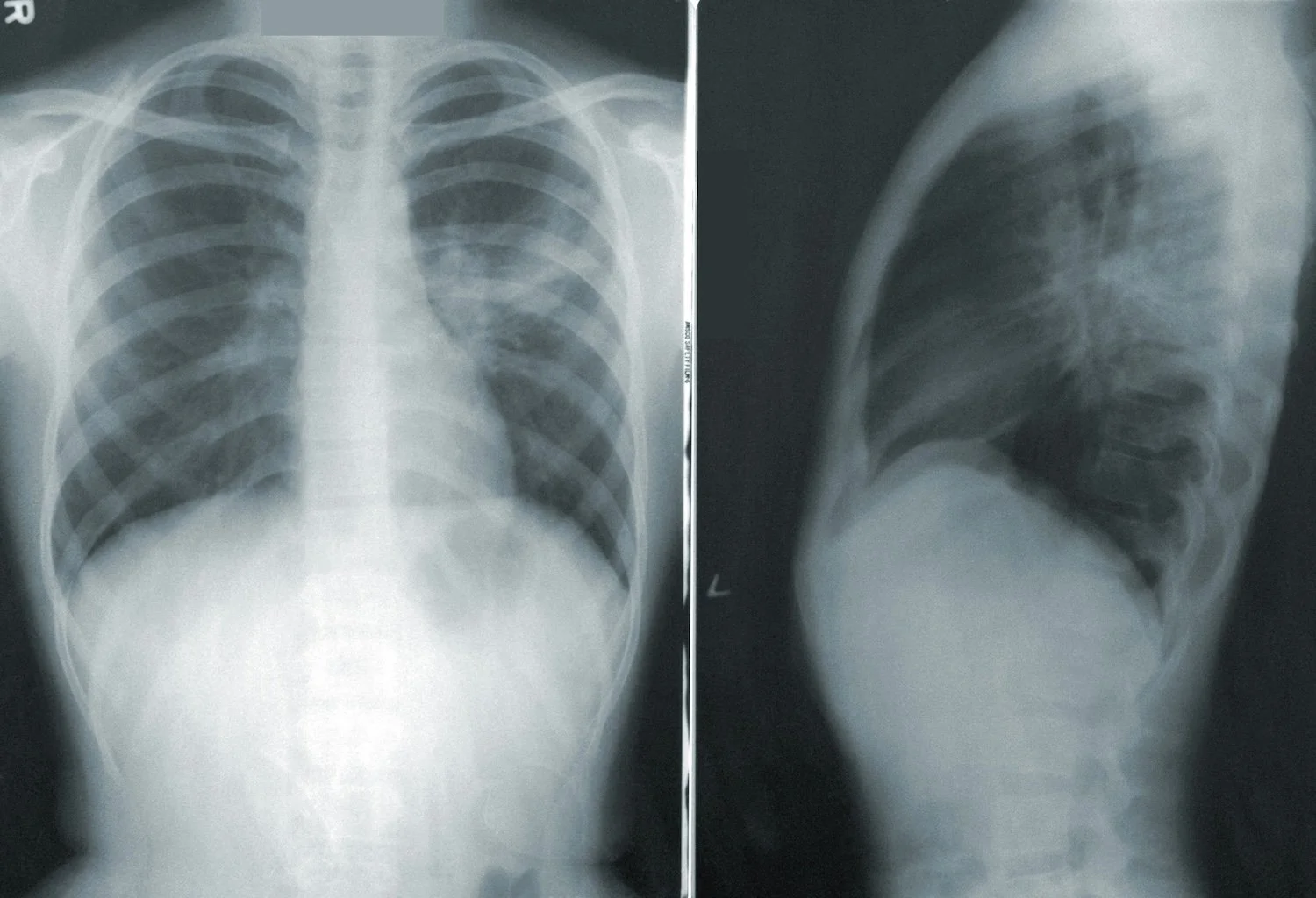Pneumonia 101: Get the Facts
Pneumococcal pneumonia affects nearly a million people every year in the U.S. But when you start thinking about it, you might realize you have more questions than answers about this condition.
An x-ray showing pneumonia (via CDC)
Key Takeaways
Pneumonia is a serious condition. It’s an infection of one or both of your lungs usually caused by a bacteria or a virus, but rarely it can be caused by a fungus.
Pneumonia itself isn’t actually contagious, but the bacteria and viruses that cause it are.
Symptoms include a persistent cough, usually with phlegm; fever and chills; rapid or difficulty breathing; and nausea or vomiting
You've probably heard about pneumonia plenty of times in your life, but like many common health issues, it raises a lot of questions when you start digging into the details. You might ask: What is it, exactly? How does it actually spread, and what are the common symptoms? And what's the deal with "walking" pneumonia?
I hear these kinds of questions from my patients all the time. So, let’s dive into the answers:
What is pneumonia? Is it contagious?
Pneumonia is an infection of one or both of your lungs caused by a bacteria, a virus, or rarely, a fungus. When you breathe, oxygen fills your lungs and then fills millions of alveoli (tiny, balloon-like air sacs). These sacs deliver the oxygen to your blood and take in carbon dioxide for you to exhale. When you get pneumonia, those air sacs get inflamed and fill with fluid, making it harder to breathe.
Bacteria and viruses are opportunistic! More often than not, pneumonia is a secondary infection – you’re more likely to get it when your immune system is weakened and your body is busy fighting off something else like COVID-19, the flu, bronchitis, etc. It also tends to impact the most vulnerable people – young children, older folks, and people who are already immunocompromised. I had a textbook case of pneumonia when I was around 10: What started out as bronchitis turned into pneumonia and I was hospitalized overnight and out of school for a week.
In the medical world, we make a distinction between two types or classifications of pneumonia: hospital-acquired (HAP) and community-acquired (CAP) because HAP tends to be more severe and caused by bacteria that’s resistant to antibiotics. CAP, on the other hand, is usually caused by more treatable bacteria, by viruses, or (in rare cases) by fungi.
A lot of patients ask me if pneumonia is contagious and I think the Cleveland Clinic explains it well: “Pneumonia itself isn’t actually contagious, but the bacteria and viruses that cause it are. For instance, the flu is contagious and can lead to pneumonia, but most people who get the flu won’t get pneumonia.” You’re likely not contagious anymore after 48 hours of taking antibiotics and no longer have a fever (if you have bacterial pneumonia). If you have pneumonia caused by a virus, you may be contagious for longer but as symptoms start to go away, you start to become less contagious. The rare pneumonia caused by a fungal infection is not contagious. It’s a great idea to wear a mask while sick and for about a week after you recover. It’s also a great idea to wear a mask if you are going to be around sick people, especially if you are in a group that is at higher risk of pneumonia.
What is walking pneumonia, then?
Walking pneumonia isn’t a medical term – more of an everyday shorthand that just means a mild form of pneumonia (likely community-acquired), where you’re probably feeling okay even though you have some symptoms. As your nurse practitioner, you might hear me call it atypical pneumonia. But despite “walking” being in the name, it still requires rest (and potentially medication) for you to recover.
How do you know if you have pneumonia? What are the symptoms?
Pneumonia can be diagnosed through listening to your lungs, blood tests, chest x-rays, measuring oxygen levels, and/or by sampling the fluid in your lungs – in addition to screening for symptoms like:
A persistent cough, usually with phlegm
Fever and chills
Rapid or difficulty breathing
Nausea and vomiting
In some cases, people (especially older folks) can also experience confusion or lower body temperature. If you suspect you may have pneumonia, be sure to be seen by a medical provider as soon as possible.
How do you treat pneumonia if you have it? Can you do anything to prevent it?
Treatment options for pneumonia depend on the underlying cause and how severe your case may be. If you have pneumonia caused by bacteria (which is the most common), your provider may prescribe an antibiotic such as amoxicillin or doxycycline. For viral pneumonia, an antiviral medication like tamiflu might be an option to help you feel better.
No matter the cause, you should rest and hydrate if you have pneumonia, and you may also find relief with over-the-counter medicine like ibuprofen and cough suppressants. You should always consult your medical provider before taking over the counter medications. The most severe cases may require oxygen therapy or hospitalization. In fact, the American Lung Association estimates that about 150,000 people in the US are hospitalized every year for pneumococcal pneumonia (the most common type) alone.
What about prevention? There is a safe, effective pneumonia vaccine, recommended for those under five, over 50, or with chronic conditions, which helps protect against that most-common type of pneumonia. Staying up to date on your other vaccines can make a big difference, too, since pneumonia is often a secondary infection to other illnesses.
Otherwise, prevention looks a lot like the same things you do to stay healthy generally: staying away from people who are sick, washing your hands, prioritizing sleep, exercising regularly, not smoking, etc.
Can you die from pneumonia?
Unfortunately, yes. Pneumonia is very common, so it can be easy to dismiss as a dangerous condition. But more than 40,000 people in the U.S. die each year from pneumonia, most of whom are older adults over 65. That’s because it can lead to complications like acute respiratory failure or sepsis (when the infection moves to your blood).
But I want to reassure you: Pneumonia is preventable and treatable – it just requires prompt attention from a medical provider!
Are you looking for a new provider to walk with you on your health journey?
I started Whole Person Well Care because I wanted to offer the kind of care I spent years hoping to find: Care that feels personal. Care that creates safety. Care that sees you as a whole person.
I offer primary and preventative care for general wellness and long-term health – seeing people virtually across Washington state and in-person in Seattle. If you’re looking for transparent, inclusive care that meets you where you are, book an appointment today.


